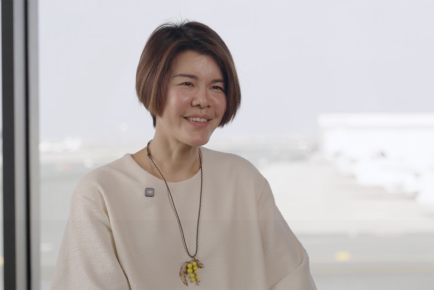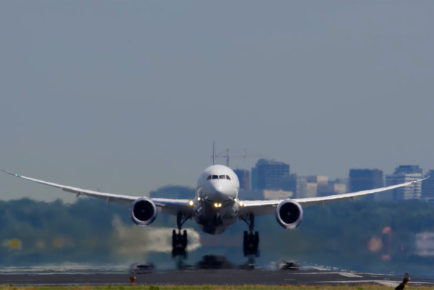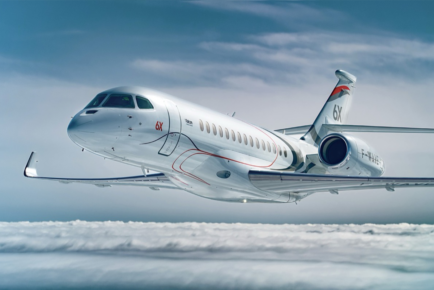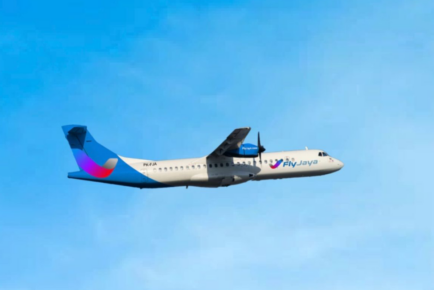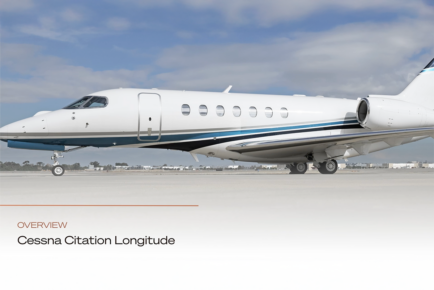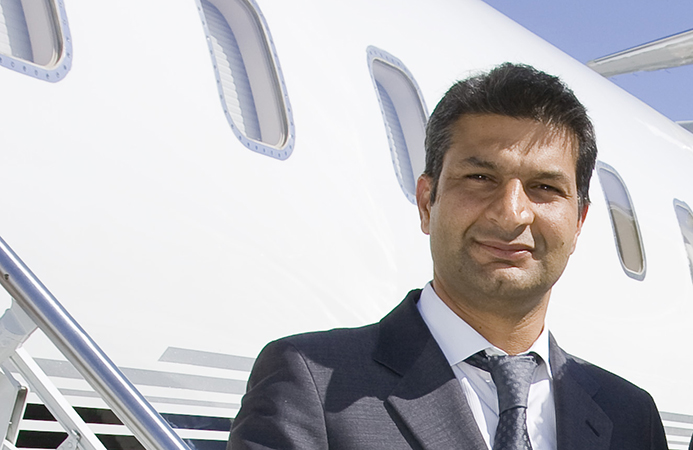
Download article in PDF format
JET Asia-Pacific, Spring 2013 – Industry Insider
Interview by Anthony Lam
Could you briefly introduce Jetcraft’s history and your role in the company?
Jetcraft was founded 51 years ago by my partner, Bucky Oliver. He’s based in Raleigh, North Carolina. At that time he was a pilot, and he was passionate about aviation. He was from a big family in property development, and his friends who wanted to buy aircraft would ask him for advice on what to buy, so that led to him starting Jetcraft as an aviation brokerage firm. Then he set up a maintenance center, and even became the Cessna distributor in North Carolina at one time.
When I joined Jetcraft in June 2008, I had been the head of marketing at Bombardier before that. I got to know Jetcraft from my days at Bombardier as we were selling them aircraft. When I left, Bucky approached me and asked me to run his company. I said I didn’t want to run it, but I would be interested in buying it. So, we agreed on a 50-50 partnership at that time. Back then, it was very much a U.S. company, with mostly U.S. operations.
Where Bucky and I saw synergy between us was in combining my knowledge of international aviation with Jetcraft’s strong U.S. base. I was interested in Jetcraft because its base was very good, and the people were excellent.
My role at Jetcraft is that I became a shareholder. I do a lot of the sales, because I love selling aircraft. Of course, I’m very involved in the strategy and planning too. In 2008, we decided to take Jetcraft global. And now, we have people here in East Asia. We have an office in Moscow, and an office in Dubai. Basically, we are doing well in the U.S. and Europe, and we are expanding into Asia. Our next step is to do something in Latin America.
What would you say are the milestones for Jetcraft?
There have been key milestones, beginning with its founding. Later was when Jetcraft began distributing planes for Cessna. After that, we began buying green Challenger 605’s. Then there was a milestone of me joining the company, and the milestones of opening the different offices in each of the cities where we operate. These expansion models were all important milestones.
The vision is to keep growing. We want to serve our customers well, and that means we have to have local presence. We need to be close to our customers both physically and culturally. That’s the key, so that’s the model that we have. We are the only brokerage firm that takes this approach, and the beauty of it is that we are truly serving our clients.
Most deals have a buyer on one side of the continent and a seller on the other. In a recent transaction, we had a buyer in Kazakhstan and a seller in Malaysia, and we managed that deal on the ground in both places. We stand in between and make the connections that help to bridge the gaps between the buyer and the seller. It makes the transaction go so much more smoothly. This is where we are different from everyone else, and I think this makes us successful, even in tough times. Even though the market isn’t very good at the moment, we are continuing to grow.
How did you get into aviation?
I am passionate about aviation, and have been since I was a kid. I wanted to be a pilot, but after studying, I realized I would rather be a leisure pilot than a commercial pilot. I obtained an Aerospace Engineering degree, and later joined Airbus. I ventured into marketing there, and I was a part of the first team to create a marketing team in the U.S. I was in marketing for another two years before moving into sales, where I stayed for about three years, then became VP for sales in Airbus until Bombardier recruited me in 2001.
I transitioned from commercial aircraft to business aircraft at that time as I was very interested in the diversity of private aviation. Sometimes you sell airline-type models, but sometimes you sell to private individuals, and sometimes to governments. It’s a more diverse and dynamic selling process.
How has your experience with Airbus and Bombardier helped you get to where you are now?
It was key. I always had a plan to get to a point where I could run my own company, but working for a big company, you learn discipline, you learn processes, and you learn some of what not to do. Learning how to make good decisions and strip down the processes to make things efficient are both important.
Looking back, would you do anything different?
No, I feel I was very lucky. I was at the right place at the right time. I worked hard, and I learned a lot, but ultimately, I managed to take opportunities as they arise and met some good people along the way.
It worked in large part because I am willing to take risks, and I think that makes a difference. I’m not afraid of risks or of making decisions. I voice my opinion. When someone gives me responsibility, I make the decision and take the risks, and that makes all the difference. Very often, it is a decision that you make that changes your path. With each move I made, people were surprised, thinking I was crazy, but they have all turned out well for me. Sometimes, you just have to go with your instinct.
How do you view the business aviation industry in Asia-Pacific region?
Frankly, the APAC region has been sustaining this industry in the past several years. If you look at the activity levels since 2009, without the APAC region, the industry would have been in a turmoil. The U.S., Europe, and Russia, were all in bad shape at the time. Africa was there, but it wasn’t really developed. So, it was the Asia-Pacific. That’s what sustained our business.
I still believe there is a lot of growth in the region, and China is the biggest market in that regard. You can’t afford not to be in China right now. It is going to be a major piece of the puzzle in the foreseeable future. Just the size of the country, the economy, the growth rate, and the fact that people are buying planes and getting used to aviation means that it’s there and it’s growing. Word of mouth has made private aviation grow quickly in China and the region in recent years, and it is poised to expand.
Reputation is very important, and must be sustained. Most of our business is from referrals. This is a very effective mode for operating in China, where word of mouth is so important to the industry.
What are some of the key changes you would like to see in China?
The key changes are infrastructure and process related. For instance, if you could have a quicker process to register a plane in China, that would be a significant advantage for the industry. It takes six months to a year to register a plane here. If I wanted to take a plane from the U.K. to the U.S., it takes four to six weeks. In order to get a plane from the U.K. to China, you have to go through the U.S., and it can take six to eight months. In the pre-owned market, this is especially difficult. And the import taxes are still very high too.
All these infrastructure issues are slowing down the potential growth, but I hope there will be changes. I would say that is the major challenge in China.
What is the best advice for a prospective jet buyer?
Some buyers are too focused on new planes. In the Asia-Pacific region in general, people often forget to look at a pre-owned plane, even when you can save a substantial amount by purchasing pre-owned. Even after you have refitted a pre-owned plane, you could be saving up to ten million dollars on it, and it will perform in the same as a new aircraft.
I look at an airplane as a tool. It’s not just a toy. So, why not get a plane that does the same job, but at a much lower cost? The good pre-owned can be substantially lower in price than a new aircraft, and after flying it for three years, you might even be able to fetch the same price you bought for because you can get such a good deal on pre-owned aircraft today. If you take a new plane, as soon as you take it home you would’ve lost 15% if you tried to resell it.
I usually advise clients to at least consider pre-owned jets. People don’t look at the great opportunities available in the pre-owned market. It’s a matter of the market here maturing, which then pre-owned jets will become more popular with new buyers. It will come around in time, and there is actually already more interest of pre-owned aircraft in China now than ever before.
As far as specific advice for today, I would say this is a good time to buy a pre-owned aircraft, as prices are relatively low. They are currently trading at 20% below what they are worth today. The demand for pre-owned aircraft is just not there yet, recognize that opportunity today will see a good return on investment in the next several years. It’s a smart buy today.
What are some of your plans for Jetcraft in the near future?
The future plan is to continue to grow in APAC. We’re looking for one or two persons to be based in mainland China, most likely Shanghai. The market is very good right now, and we would like another person based in Southeast Asia also. Hong Kong will remain our main office for Asia. Our new salespeople will report to Hong Kong and be supported by Hong Kong. We are also looking toward Latin America. We hope to open offices in Mexico and Brazil. With the current projected growth, we’re also looking at expanding in the Middle East.
SIGN UP FOR OUR MONTHLY JETSTREAM RECAP
Don't miss future Jetstream articles. Sign up for our Jetcraft News mailing list to receive a monthly eblast with links to our latest articles. Click to join the 1,800+ subscribers on our mailing list.
